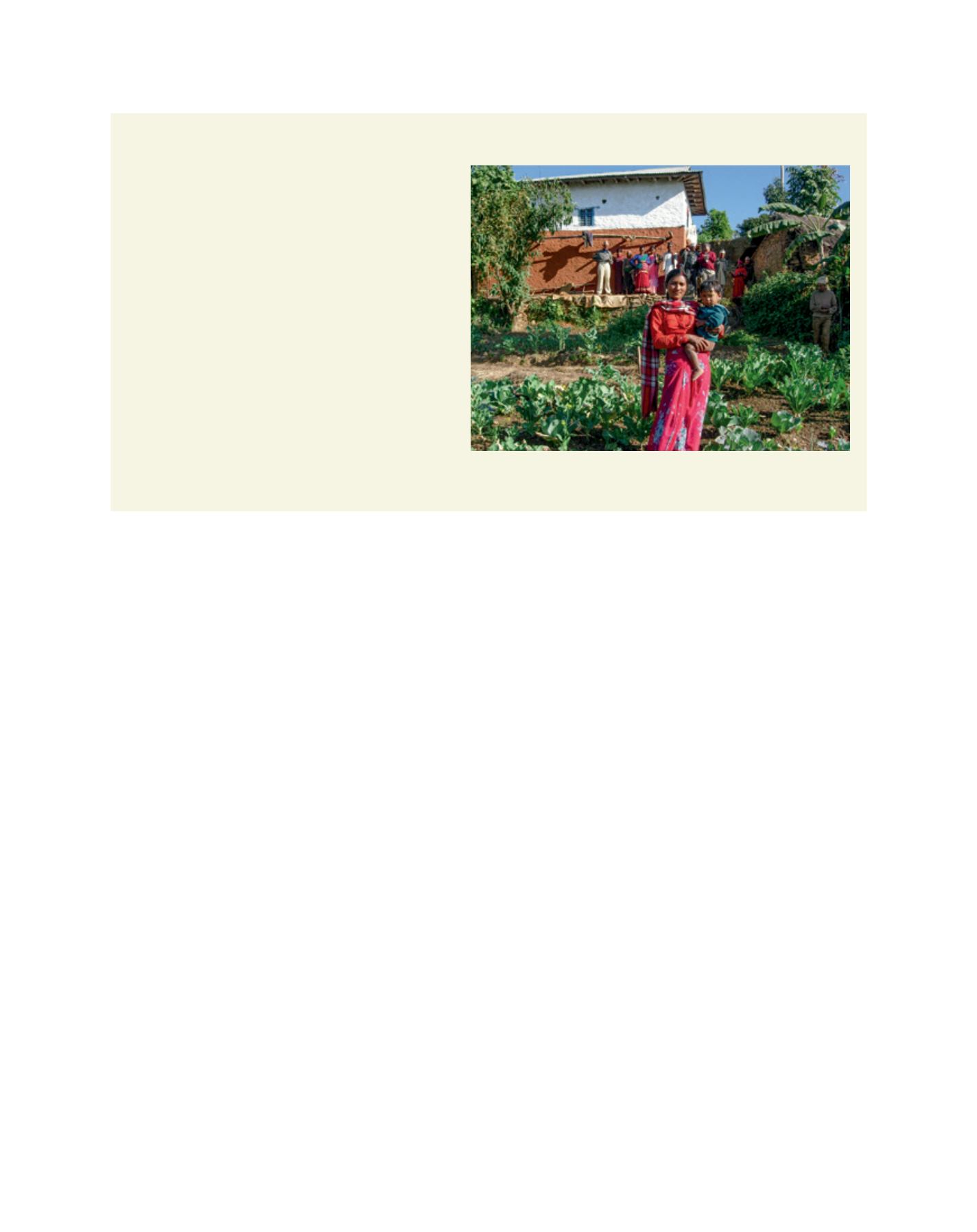

[
] 94
The Committee on World Food Security’s High Level Panel
of Experts (HLPE) convened by the Food and Agriculture
Organization of the United Nations (FAO), affirmed the need
to realize the global contributions and local insights for food
and nutrition security and sustainable development provided
by family farmers.
4
Family farming can bring about transfor-
mational change in the fight against hunger, malnutrition and
the degradation of natural resources and agricultural biodiver-
sity. By definition, family farms perform social, ecological and
production functions in a landscape. Their aggregate scale is
enormous. FAO’s agricultural census data suggests that family
farms represent 98 per cent of all farms and 53 per cent of the
world’s agricultural lands.
5
This does not include the further
contribution of forest dwellers, fishing communities and
pastoralists that is estimated at another 20 per cent (in the
absence of data to confirm it).
Documentation and review of the status of family farming
in the course of the IYFF concluded that small-scale farm
households demonstrate higher experience in managerial
capacity and a higher level of skills when compared to other
farm enterprises. Reviews and case studies also show that
household resource allocation decisions are made jointly
by the couple or adults managing the family farm. In sum,
human capital in family farms is the key asset in their more
efficient farm management and their ability to channel returns
back to the household. This, coupled with the rich knowl-
edge of natural resources and biodiversity in the landscapes
where farm families have lived for generations, creates unique
opportunities to promote efficient use of natural resources
and sustainable use of biodiversity for healthier, more diverse
and sustainable diets.
6
The reliance on family management and gendered knowl-
edge of men and women in the household allows for a different
and more diverse set of products to be grown and raised. The
two crucial assets that support diverse and intensive produc-
tion on family farms are knowledge (human capital) and the
agricultural biodiversity that can be usefully maintained and
managed in a small space. Studies of rural and peri-urban
home gardens have amply documented the ability of farm
families to manage high levels of agricultural biodiversity in
small spaces.
7
Numerous studies of family farms show that
they tend to be structured as mosaics of production niches
that maintain many species of crops and livestock, including
crop varieties and animal breeds that are not commonly found
in large-scale agriculture.
Two of the most important aspects of family farms are:
• what they produce, the diversity and range of plant and
animal products from these farms
• how much they contribute to the total food and nutrition
security in their respective countries.
The data on the number of family farmers is uncertain, as
less than 10 countries in the world actually have a definition
for small family farms. Many reports assert that 70 per cent
or more of the world’s food comes from small family farms.
What foods, where are they grown, how they are marketed
or distributed and consumed is as yet to be documented
at a regional or global level. One of the outcomes of IYFF
should be a clearer and more concrete understanding of the
specific roles and contributions of family farms to sustain-
able agricultural production and food security. Despite the
large gaps in data on the contribution of family farms to
food and nutrition security as well as the challenges they
face, there is a basic agreement that in all cases human
resources, namely the farm household’s knowledge, labour
and management capacity, are key. The knowledge and skills
that accrue when a family lives in a landscape over time
creates a stock of knowledge capital about biodiversity and
Home gardens maintain biodiversity and enhance food security, nutrition and household income
In family farms, home gardens are important reservoirs of
agricultural biodiversity and the knowledge to makes use
of it. With support from the Swiss Agency for Development
and Cooperation, Bioversity International started a home
garden initiative in Nepal in 2002 to study how these small
plots contribute to biodiversity, food security, nutrition and
household income.
Working with Local Initiatives for Biodiversity, Research
and Development (LI-BIRD) and other partners such as the
Department of Agriculture, the initiative aimed to understand the
scientific basis of the management of agricultural biodiversity in
home garden ecosystems in Nepal.
Thanks to the project interventions, home gardeners saw their
yields nearly triple from 300 kilograms per year to as much as
900 kilograms per year in some households. More households
were selling their garden products as well. Biodiversity increased
in the home gardens of participating households, with 66 species
under cultivation as compared to fewer than 40 species before
the project began. Farmers now maintain higher plant diversity on
farms and cultivate a greater range of plant groups – vegetables,
fruits, spices, medicinal herbs, fodder and ornamentals – and
a larger variety of different vegetables. Participating households
doubled their overall consumption of produce, including the
amount of green leafy vegetables, and have increased their intake
of vitamin A-rich foods like mango and papaya by 36 per cent.
11
A farmer in her home garden, Nepal. Home gardens play a big role in improving
dietary diversity, bringing in extra income and improving family well-being through
the use and conservation of biodiversity
Image: Bioversity International/Bhuwon Sthapit
D
eep
R
oots
















